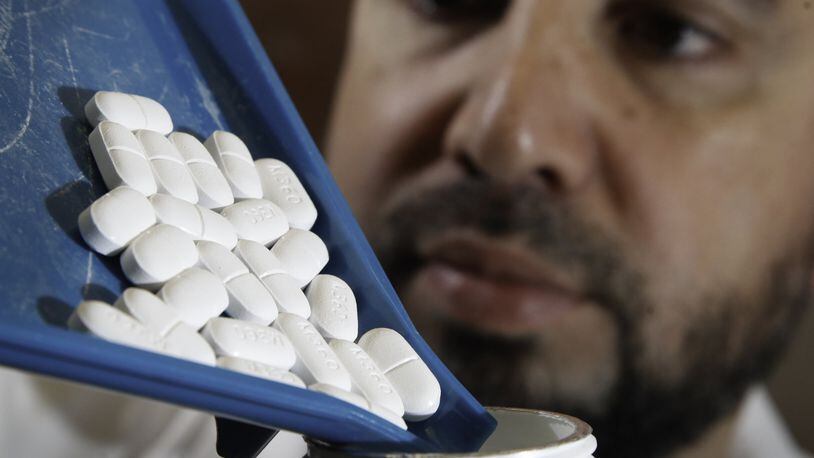Nearly 5,000 Ohio Medicaid beneficiaries received what’s considered a high amount of prescription opioids between June 2016 and May 2017, according to the report. That number excludes anyone with cancer, in hospice care or on medically assisted treatment for drug dependence as the guidelines are different for those situations.
The report considered a “high amount” to be a morphine equivalent dose (MED) of more than 120 mg daily for at least three months.
THE PATH FORWARD: Dayton Daily News Investigates digs into the opioid crisis
That’s the equivalent to taking 16 tablets a day of Percocet 5 mg and exceeds manufacturer recommends as well as Ohio and CDC guidelines, which caution anyone taking beyond daily MEDs of 80 mg and 90 mg, respectively.
“Among those receiving high amounts, more than 700 beneficiaries are at serious risk of prescription opioid misuse or overdose,” the report said. “Some received extreme amounts of opioids, while others appeared to be doctor shopping.”
The data also identified 47 prescribers who stood out for prescribing to people at serious risk — writing 5,584 opioid prescriptions between them.
Seven counties including Miami, Clark, Madison and Clinton had the highest proportion, 19 to 20 percent, of beneficiaries who received prescription opioids of any strength.
RELATED: Can Dayton go from ‘overdose’ capital to a model for recovery?
Finally, the report looked at the amount of opioids being prescribed to children under 18 and found more than 40,000 children who did not have cancer and were not in hospice care received at least one opioid prescription during the study period.
“Although we found that very few children were receiving high amounts of opioids, any opioids for children are concerning because research shows that even opioids used for legitimate purposes before high school graduation — such as an opioid prescribed by a dentist after extracting a wisdom tooth — are associated with increased risk of future opioid misuse,” the report says.
“Our results suggest that some prescribers and pharmacies may not be following Ohio’s opioid prescribing policies, potentially putting Medicaid beneficiaries at risk,” the OIG concluded.
A separate report recently released by Ohio Auditor Dave Yost shows the number of Ohio Medicaid recipients with an opioid-related diagnosis climbed 430 percent between 2010 and 2016. The report also shows the state’s cost for treating opioid addiction through medication-assisted therapies, which has become more accepted and deemed effective in helping prevent relapses, jumped from more than $13 million in 2010 to $110 million by 2016, according to Yost.
RELATED: Auditor’s report shows opioids impact on Medicaid
The number of people on Medicaid receiving medication-assisted treatment for addiction jumped from about 6,500 in 2010 to nearly 48,000 in 2016, according to the auditor’s report. It also shows a higher percentage of Medicaid recipients (a 45 percent increase) received medication-assisted treatment within six months of a dependence/abuse/overdose diagnosis in 2016 as compared with 2010.
The Associated Press contributed to this report.
About the Author
